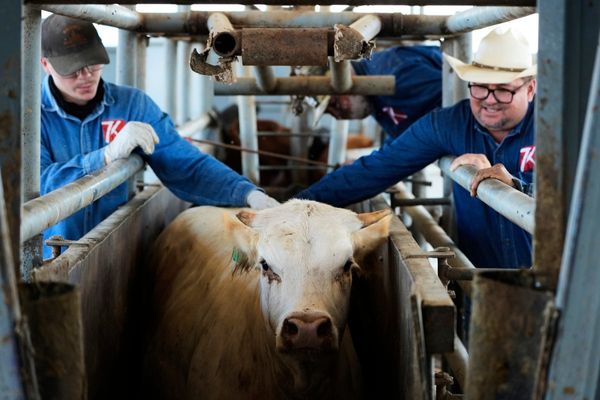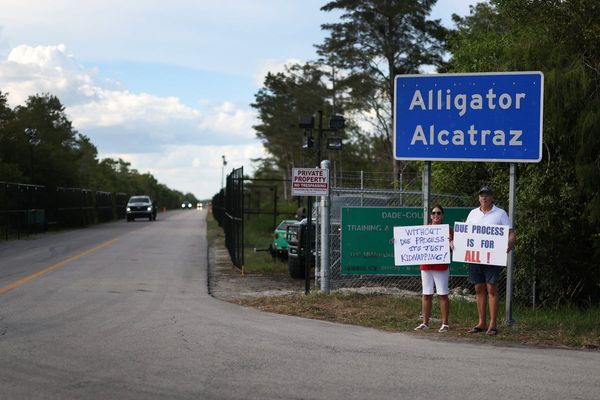
The NSW Labor government’s decision to waste $16 million on domestic violence perpetrator Dana White’s UFC — celebrated last year by a misogynist rant by a serial homophobe in front of a NSW government logo — is only a drop in the fiscal ocean of taxpayer handouts to sport in Australia, all without any evidence of public benefit.
It’s only a few days since NSW Premier Chris Minns, hilariously, was posing as a paragon of fiscal virtue over declining to waste $40 million bringing American football to Australia. The honour of being the NFL’s sucker instead went to Jacinta Allan’s rancid Victorian government, the one state with even worse public finances than NSW.
But Victorian taxpayers are used to having their money wasted paying for international sport to grace Melbourne: they paid $589 million to not host the Commonwealth Games under the Andrews government; they handed $100 million to Tennis Australia to keep it going; they’ve forked out $700 million over the last decade on a Formula One Grand Prix — which hit a cost of $100 million a year in 2023. Claims of net economic benefits from the grand prix (peddled by those doyens of financial credibility, big consulting firms) have been entirely discredited — along with claims that hosting major sporting events in developed countries generates any additional tourism. Forecasts — usually by consulting firms — of the benefits of major sporting events invariably significantly overstate any benefits and understate costs.
That’s already proving to be the case with the risible modelling for the Brisbane Olympics, where the initial — and absurdly optimistic — cost of $4.5 billion has already blown out by $680 million — with non-Queensland taxpayers on the hook for half, courtesy of a deal between the Morrison and Palaszczuk governments.
But while one-off events like the Olympics can smash budgets, it’s the steady flow of taxpayer dollars into domestic sport where taxpayers are being routinely shortchanged. Last year sports researcher Greg Blood estimated that federal and state governments had handed at least $250 million to NRL clubs and at least $450 million to AFL clubs alone over the last decade and a half, often as a result of promises made during election campaigns.
An examination of budget papers shows that the federal government, since 2014, has given the Australian Sports Commission $3.467 billion in funding, with another $800 million to be paid over the next three years. It has also given the Australian Sports Anti-Doping Authority, and its successor Sports Integrity Australia over $280 million since 2014. Sports grants programs run by the Department of Health, which tend to peak in election years, totalled over $1 billion, with taxpayers committed to another $330 million over the next three years.
All this federal government spending is separate from state and territory handouts to major sports and commitments to sporting infrastructure, most of which lies unused for the bulk of its life. NSW taxpayers coughed up $874 million for a new, rarely used football stadium to replace the previous stadium at Moore Park, after the cost, inevitably, ballooned 20% from its original estimate (remember that next time Peter Dutton insists we could build a fleet of nuclear reactors to a specific budget — we can’t even build a footy field and some stands without the cost soaring). In January, economist Nicholas Gruen handed the Tasmanian government a report showing a new stadium at Macquarie Point in Hobart would cost $1.1 billion rather than $775 million, that the government had engaged in financial trickery to reduce forecast costs, and the stadium would generate a net benefit of just 44 cents per dollar invested.
While some sports grants programs fund local sporting facilities and directly support local mass participation activities, the big dollar signs are reserved for either major competitions like the NRL and AFL, major international sporting events, or elite sports with minimal mass participation such as Olympic sports funded by the Australian Sports Commission.
Taxpayers would see some return from the billions directed to high-profile and elite sports if there was any connection between such investment and improved levels of sports participation among Australians, which would lead to greater preventive health benefits such as lower obesity levels or cardiovascular disease. There is little evidence of any connection, however, despite decades of research: it may occur under some conditions, or there’s no link whatsoever, or very little evidence it exists, or it may contribute a little indirectly via funding in some cases, or any link may be small, restricted and doesn’t come automatically.
Unlike other kinds of infrastructure, community grants, or other areas of government spending like health and caring, welfare, industry support or even defence, sports funding is unusual in delivering virtually no benefit whatsoever for taxpayers, except to a small segment of sports administrators and elite participants, who would arguably otherwise be employed more usefully elsewhere in the economy. Governments would do better to simply tip money out of a truck into a stadium-sized hole.
Have something to say about this article? Write to us at letters@crikey.com.au. Please include your full name to be considered for publication in Crikey’s Your Say. We reserve the right to edit for length and clarity.








